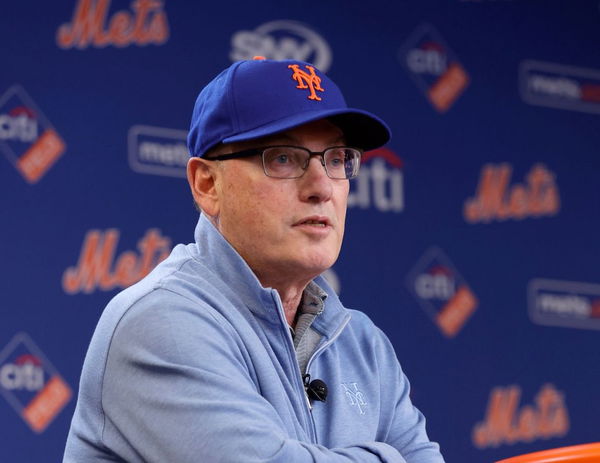

MLB has long been accused of financial disparity between teams. And instead of shrinking, that gap just keeps getting wider. Whenever this debate pops up, the Dodgers usually take the most heat for flexing their financial muscle. But according to the latest report from BrooksGate, there’s a bigger surprise—the Mets are actually leading the spending race! So, how is this financial divide impacting the league’s competitive balance, and is there any real fix?
Honestly, the concept of thriving in the MLB is evolving. The disparity in fund allocation has not only impacted the teams’ performance but also eroded the audience’s trust. Capital allocation now plays a bigger role in winning or losing than skill alone. Consequently, that could be the most risky blind spot in the sport. Something that can change the sport for the worse.
Why? Because as of 2025, the Mets and Dodgers have shelled out a jaw-dropping $400 million and $549 million, respectively, for payroll and tax. If this continues, only billionaire-backed teams like the Dodgers and Mets will have a shot at winning. That’s not a sustainable way to run the league.
ADVERTISEMENT
Article continues below this ad
Referring to the BrooksGate report, MLB insider Jon Heyman laid out just how lopsided things have become: “According to these figures, the Mets spend the highest percentage of their revenue on players (90 percent) and the Marlins the lowest (27 percent).” Yes, while the Mets have spent $400 million this year, the Marlins spent just $86 million. Imagine the disparity here.
Poll of the day
Poll 1 of 5
Where do you buy MLB tickets online?
Ticketmaster
TickPick
StubHub
SeatGeek
Is trading Rafael Devers the right move for the Boston Red Sox?
Yes, it's time for a change
No, he's too valuable
Depends on the trade offer
Not sure
Whats your Perspective on:
Is MLB's financial disparity turning America's pastime into a billionaire's playground?
Have an interesting take?
Is it hypocritical for Red Sox fans to criticize the Yankees for using torpedo bats when their own team tried them too?
Yes, it's hypocritical
No, it's different circumstances
Both teams are at fault
It's just part of the rivalry
Do you think Olivia Dunne and Paul Skenes' relationship will withstand the pressures of fame and professional sports?
Yes, they seem solid
No, fame will get in the way
It's too early to tell
They should focus on their careers
Is the Angels' mismanagement of Angel Stadium a bigger threat to the franchise than their on-field performance?
Yes, it's a huge issue
No, on-field performance is worse
Both are equally damaging
Not sure
Want to dive deeper?
Here are the articles that inspired recent polls.
AD
According to these figures, the Mets spend the highest percentage of their revenue on players (90 percent) and the Marlins the lowest (27 percent) https://t.co/ZyPWlHN2eW
— Jon Heyman (@JonHeyman) March 29, 2025
Back in 2022, the Dodgers and Orioles had the biggest payroll disparity in the history of the sport, with about $226 million separating their payrolls. That widened to $314 million this year. It’s no surprise, then, that money is translating directly into wins. Over the last five years, the top six payroll teams have averaged 91 wins per season—up from 86 in the previous five years.
“You’ve seen teams with low payrolls win, and teams with high payrolls lose, but those big markets have an advantage,” the White Sox left fielder, Andrew Benintendi, said. “Smaller markets can’t afford some of those players. That divide is growing.” So, while the competitive scenario is fast fading out with the pay disparity, a few corrective measures are the need of the hour.
What’s your perspective on:
Is MLB's financial disparity turning America's pastime into a billionaire's playground?
Have an interesting take?
ADVERTISEMENT
Article continues below this ad
A sustainable revenue model for the MLB
The salary cap was long discussed as the potential solution to the revenue and payroll disparity in MLB. It involves capping the upper ceiling of a player’s salary so that a team with a better financial position still cannot go overboard to get him. Well, a salary cap is a non-starter to begin with. Why? Because the owners would have to lock out the players for a season or longer to reach a pay cap. Remember the 1994–1995 strike that destroyed the 1994 World Series and is still a stain on MLB? Yes, the salary cap will not work with the players, as their earning potential will be seriously affected. MLB insider Ken Rosenthal said that salary capping might prove detrimental to the MLB. “Well, you’d be cutting your own throat,” he added.
So what’s left? An NFL-like revenue model. The NFL’s strategy is mostly dependent on national media rights. Under this model, local revenues are still under the discretion of individual teams, but national revenues are distributed evenly among all league teams. In comparison, MLB is heavily reliant on the local media rights. There are notable differences in revenue between MLB teams in major and small cities because of their heavy reliance on local television deals and ticket sales. Hence, teams like the Dodgers, Yankees, and Mets are fetching sky-high media rights owing to their popularity, while the low-tier teams are failing to replicate the same.
In this case, MLB would need to impose consolidated media rights, which might result in more parity and financial stability. Possible? It seems to be an uphill task considering how MLB operated all these years.
ADVERTISEMENT
Article continues below this ad
Do you think MLB should follow the NFL in terms of revenue sharing? Do let us know in the comments below.
Have something to say?
Let the world know your perspective.
ADVERTISEMENT
ADVERTISEMENT
ADVERTISEMENT
ADVERTISEMENT



Debate
Is MLB's financial disparity turning America's pastime into a billionaire's playground?